The Ford Mustang Is A Safer Car Than The Euro NCAP Results Suggest
Earlier this week we reported on how the Ford Mustang has been made a teeny, tiny bit safer, according to Euro NCAP’s standards. But is a three-star rating really as poor as it sounds in the modern age, or does Euro NCAP need to wind its neck in?
First, it’s important to understand the four safety areas that NCAP rates: adult occupant, child occupant, pedestrian and active safety systems. The first three are mostly passive, where points are scored based on how well the standard car minimises damage to humans in a crash. There’s a spec-related element to these as well, so how well it should minimise damage on paper matters too. Pop-up bonnet fitted as standard? Points in the bag before the test even starts. The safety systems are tested too, so lane-keeping and auto braking setups have to prove what they claim.
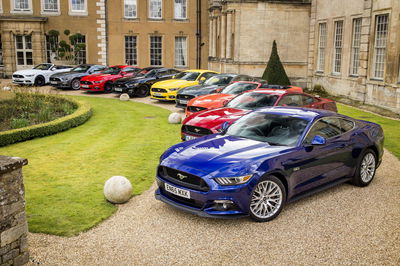
Euro NCAP doesn’t publicly detail the exact breakdown of points awarded for various spec sheet features. The assumption is that, given the four test areas are all marked out of a maximum 100 per cent, each area swings a quarter of the overall result into the pot. Is that always fair, though?
Take the Mustang and compare it to one of those God-awful seven-seat MPVs you always hope you’ll never have to buy but will probably end up getting anyway when you have kids. They’re there to do a practical job, and as part of that you want a family bus to offer maximum safety for the loud ones in the back. But a Mustang? Are you really going to use it as a family car?
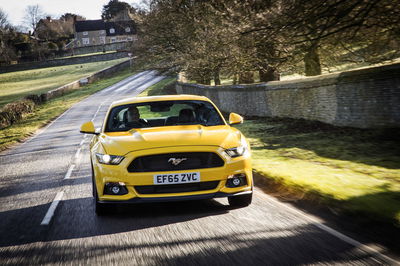
The reason I ask this is that the Ford gets an uncomfortable-looking 32 per cent for child occupant protection. Most cars get scores in the high 70s or 80s. As an explanation, the Mustang lacks seatbelt pretensioners and load limiters in the back, and there’s no seatbelt reminder beep for the back seats. It does have Isofix for anchoring kiddie seats, though, potentially making the seatbelts irrelevant for young kids. With that in mind, the insanely low grade in safety class seems a bit harsh for this car.
Next, let’s talk about pedestrian safety. We’re not going to dispute that accidents happen, but frankly they seem to be at least as often the fault of the pedestrian as of the driver, and it’s the driver who gets kicked in the financial teeth when their pop-up bonnet costs four figures to set back into place just because some jay-walking idiot was texting instead of looking for traffic. Anyway…
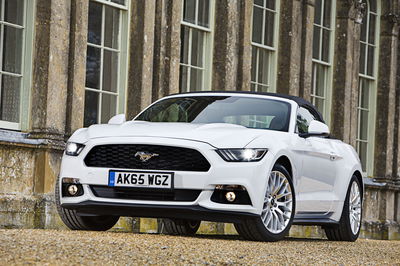
The Mustang gets 78 per cent for jay-walker safety, which is equal fourth-best recorded so far this year. That’s good, then, right? Yes, but it’s apparently not enough to salvage more stars. Why? Because the good old-fashioned crash test dummy says not. Our lovely Mustang only gets 72 per cent for adult occupant protection, when even the latest small cars are climbing into the 90s.
The thing is, though, despite mods that now mean your face won’t hit the steering wheel through the airbag any more (yay), the official adult occupant score has stayed the same because Euro NCAP hasn’t physically re-crash-tested it. Instead, it has an equation that predicts what the car would score: 74 per cent instead of 72; not enough to win a fourth star.
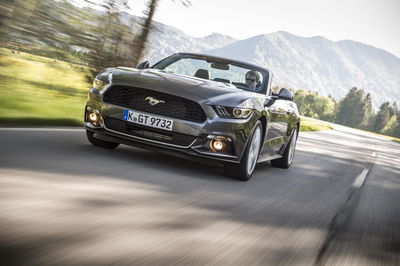
We contacted Euro NCAP for comment. Aled Williams, Programme Manager at the company, said this:
“The adult occupant protection (AOP) score has not changed as we did not conduct additional crash tests on the Mustang. Structurally, the car is identical to the one we tested previously. Ford showed that the restraint systems have been improved to prevent the ‘bottoming out’ that we saw in the original frontal ODB test.
“However, the difference this would make to the score is very small: AOP would score 28.162 points (rounds to 74 per cent) instead of 27.662 points (rounds to 72 per cent) and there would be no influence on the overall star rating.
“We wanted to reflect the much more significant changes they had made to safety equipment, such as AEB and lane assistance. This has improved their score in the Safety Assist section from a very poor 16 per cent to a creditable 61 per cent, and this area is no longer the limiting factor for the overall rating (child occupant protection now limits the rating to three stars).”
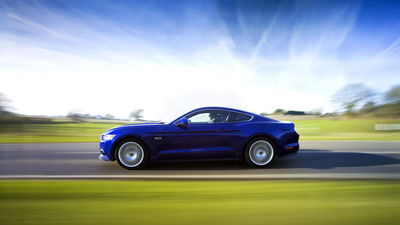
Following on from an earlier point, it doesn’t seem fair to stain the whole car with a sub-standard rating because of missing seatbelt warning beeps when it’s so rarely going to be used to carry kids anyway. Going by Euro NCAP’s comment, If results were loaded towards that car’s intended purpose (away from child occupant protection, in this case) the Mustang would be a four-star car. That, to us, seems fairer.
The one-star improvement to the Mustang’s original chronic two-star result is based purely on Ford’s decision to add NCAP-friendly safety kit to the spec sheet. Adult occupant safety has surely improved more than two per cent post-upgrades, and if not, what else must Ford have got wrong? Even the last Fiesta got 91 per cent in the AOP category, after all. Maybe Euro NCAP doesn’t have enough time, as it claims, but we’d still like to see a proper re-test of the car.













Comments
Oh cmon until now no one complained about Euro encap crash tests… It’s same for all cars.
From what I’ve seen, nobody’s getting in those back seats with comfort. Wierd considering the sheer size of the thing
I’m just dying, are you sure its the safest car that they say it is. Go to a car meet with a crowd and see what will happen. Or a mile strip, lets see what happens. Also lets hope no one rices one.
I still don’t understand how a car that got a 5 star safety rating in the US did so “poorly” in Europe.
This is the problem with standardised tests. It was made to pass the US tests, not the European ones
Complaining about the discrepancy between the test’s requirements and the car’s actual daily use (aka saying the child safety test doesn’t make sense for a mustang) makes no sense. We can’t just create an extra category for what a specific person thinks a car ought to be used to, and then apply special safery standards. I mean what’s next, drift-only safety tests ? Classic cars safety tests ? Or Mercedes tests where the only category of concerned demographic are old people ?
I don’t know, looking at the video, it does not look like my car of choice in a crash. And all these “most of the time” arguments are quite poor, because some will have passengers in the back, and someone will hit a pedestrian.
What happen’s to the car after its destroyed ?
Maybe they should sidestep the issue by removing the rear seats and selling it as a two seater
That health and saftey test was inaccurate because they didnt test it on a large group of people on the corner
No kids in the back? Come to Australia. Commodores and falcons are commonly used for throwing kiddies in the back. My 4.5 star v8 commodore even has a DVD player in the back for the kiddies. Mustangs are basically the falcon replacement here and I can guarantee they will throw kids in the back daily
Kids won’t fit in the back. The Mustang is no Falcon replacement
Pagination